Ankylosing Spondylitis Homeopathic Treatment in Dubai, UAE
Ankylosing Spondylitis (AS) is a chronic inflammatory disease that primarily affects the spine and sacroiliac joints, leading to pain, stiffness, and potential fusion of the vertebrae. In the United Arab Emirates (UAE), AS is considered a relatively uncommon condition.
A study conducted by the National Institutes of Health (NIH) for over a 10-year, identified 28 hospital-based patients diagnosed with AS, including 17 Arabs and 11 Asians. The mean age at onset was 27.7 years for Arabs and 28.75 years for Asians. HLA-B27 positivity was observed in 56% of Arabs and 81% of Asians, though these differences were not statistically significant.
Homeopathy offers a holistic approach to managing AS, focusing on individualized treatment plans that aim to alleviate symptoms and address underlying causes. In Dubai, Dr Batra's® clinics provide specialized homeopathic care for AS patients, leveraging decades of expertise and a patient-centric approach.
Why Choose Dr Batra's® Ankylosing Spondylitis Homeopathy Treatment in Dubai?
1. Global Trust and Expertise:
Dr Batra’s® is a renowned name in homeopathic care, with over four decades of experience in treating Ankylosing Spondylitis. The clinic has successfully treated thousands of AS patients worldwide, demonstrating a commitment to effective and personalized care.
2. Expert Care:
Our team of homeopathic doctors is highly skilled in diagnosing and treating Ankylosing Spondylitis. We provide individualized treatment plans based on each patient's unique symptoms and medical history, ensuring a comprehensive approach to care.
3. Customized Treatment Plans:
We understand that each patient is unique. Our treatments are tailored to address the specific needs of each individual, aiming for long-term relief and improved quality of life.
4. Proven Results:
Dr Batra's® treatment has consistently delivered positive outcomes. Many patients have reported significant relief from pain and stiffness, with some experiencing improved mobility and overall well-being.
5. Convenient Locations:
We offer accessible locations across Dubai and Abu Dhabi, making it easier for you to receive the treatment you need. Our clinics are located at:
Get Ankylosing Spondylitis Treatment at Conveniently Located Clinics in Dubai & Abu Dhabi
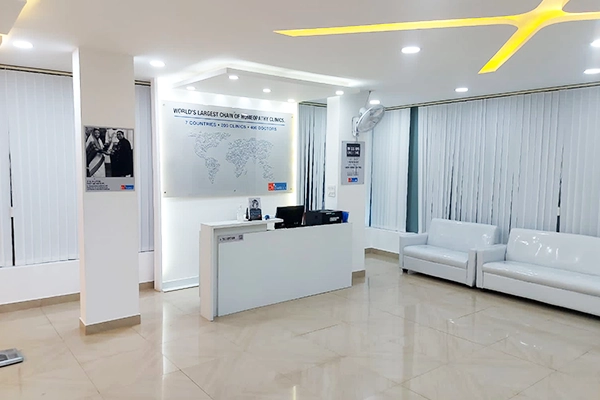
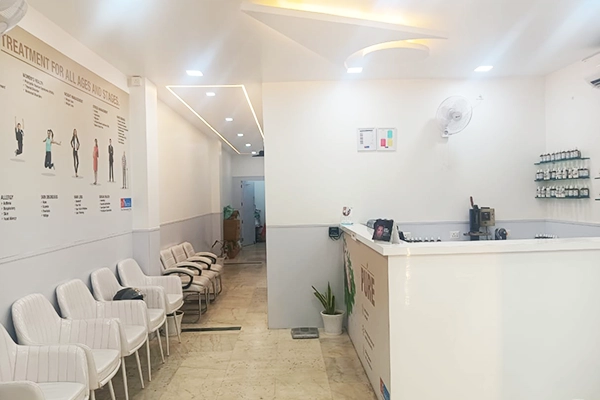
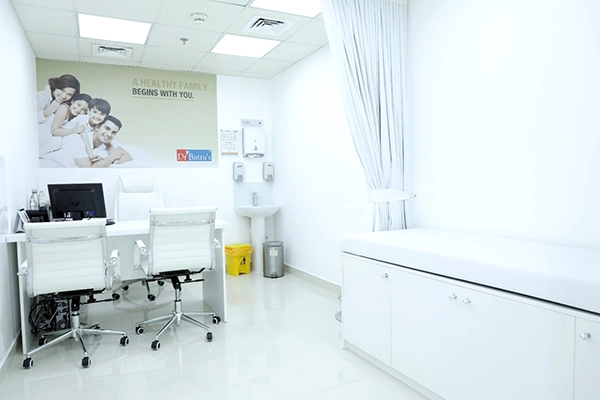
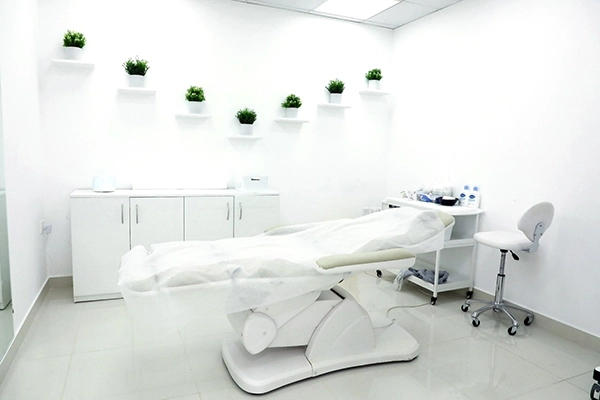
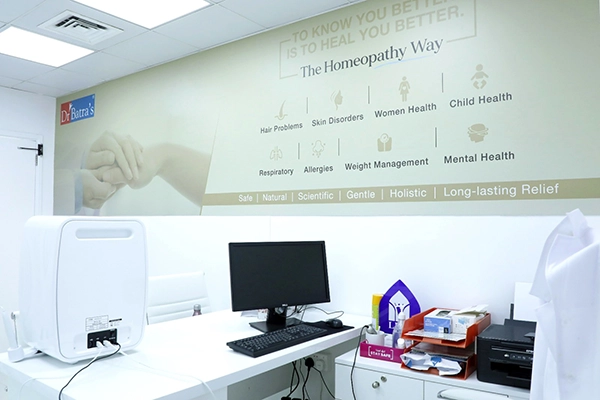
Our Treatment Process for Ankylosing Spondylitis at Dr Batra's® Clinics in UAE
- Personalized Consultation: The process begins with a thorough 30-45 mins consultation with our homeopathy experts, where we understand your medical history and symptoms.
- Advanced Homeopathic Treatment: Based on your condition, a customized treatment plan is developed using advanced homeopathic remedies aimed at reducing inflammation, pain, and stiffness.
- Holistic Approach: Our holistic approach focuses not just on the physical aspects but also considers emotional and lifestyle factors to ensure a comprehensive treatment.
- Proven Results: Many of our patients have experienced significant relief and improvement in their condition, highlighting the effectiveness of our homeopathic treatments.
Overview of Ankylosing Spondylitis
Ankylosing Spondylitis (AS) is a chronic inflammatory disorder that primarily affects the spine and the sacroiliac joints (where the spine meets the pelvis). Over time, it can lead to a fusion of the vertebrae, causing a loss of flexibility in the spine.
Early diagnosis and proper management are crucial in controlling the disease and preventing complications. AS is prevalent in the UAE, with many individuals experiencing the condition due to genetic and environmental factors.
Causes and Risk Factors of Ankylosing Spondylitis
Hereditary tendency to develop ankylosing spondylitis is very common, besides. People born with the HLA-B27 gene are predisposed to having ankylosing spondylitis.
Some studies suggest that Ankylosing Spondylitis may be triggered by an infection. In particular, people who have a gene called HLA-B27 are at increased risk of developing ankylosing spondylitis. However, only some people with the gene develop the condition.
1. Genetic Factors
The presence of the HLA-B27 gene is strongly associated with the development of AS, increasing the risk for individuals with this genetic predisposition.
In the UAE, studies have shown that the prevalence of HLA-B27 among healthy adults is relatively low, ranging from 5.7% in Arabs to 7.4% in Asians.
2. Autoimmune Response and Inflammation
AS is believed to be an autoimmune disorder, where the immune system mistakenly attacks the body's own tissues, leading to chronic inflammation in the affected joints.
3. Age and Gender Predisposition
AS primarily affects young males, typically between the ages of 15 and 30. However, it can also affect women, albeit to a lesser extent.
4. Lifestyle Factors
While the exact cause is not fully understood, certain lifestyle factors like sedentary behavior, poor posture, and lack of physical activity can contribute to the progression of the disease.
Symptoms of Ankylosing Spondylitis
Ankylosing Spondylitis manifests through various symptoms that can significantly affect daily life. Here are some of the key signs to watch for:
- Persistent Lower Back Pain and Stiffness: Often the first sign of AS, this pain may worsen in the morning or after periods of inactivity.
- Pain that Worsens After Rest: The pain typically intensifies after periods of rest, but activity and movement may provide some relief.
- Reduced Spinal Flexibility and Posture Changes: AS can lead to limited movement in the spine, resulting in posture changes like a hunched back.
- Fatigue and General Discomfort: Individuals with AS often experience general fatigue and discomfort, which can interfere with daily activities.
- Inflammation in Other Joints: AS may also cause inflammation in other joints, including the hips, shoulders, and ribs.
- Eye Inflammation (Uveitis): Some patients may experience inflammation in the eyes, leading to redness and discomfort.
Five warning signs for ankylosing spondylitis:
1. Unexplained pain in the lower back:
Usually any back pain is better after rest. In ankylosing spondylitis, it is the opposite. Pain and stiffness are usually worse after waking up from sleep or getting up after sitting for a long time.
Exercise usually increases the ordinary back pain, but in ankylosing spondylitis, the back pain is better after exercise. It is uncommon for teenagers and young people to complain of lower back pain, and that too constant pain.
Teens and young adults who complain of stiffness or pain in the lower back or hips should be tested for ankylosing spondylitis.
2. Having a family history of ankylosing spondylitis:
The diagnosis is usually made by a detailed history of the nature of pain, the exact location and factors that increase or decrease the pain. Physical examination is done to check the restriction of movements in the painful area.
Our doctors may also order tests, such as X-ray, of the painful joint. If the patient has a family history of either ankylosing spondylitis or psoriasis-related arthritis, they may have inherited the genes that put them at a greater risk for the illness.
3. An unexplained pain in the heel(s), joints or chest of the patient:
Instead of a back pain, some ankylosing spondylitis patients first experience pain in the heel or pain and stiffness in the joints of the wrists, ankles or other joints. Some patients rib bones are affected at the point where they meet the spine. This can cause tightness in the chest that makes it hard to breathe.
4. The pain comes and goes, and it is gradually moving up the spine with more severity:
Ankylosing spondylitis is a chronic, progressive disease. Although exercise and/or pain medications may help temporarily, the disease may gradually worsen. Symptoms may come and go, but they will not stop completely. Often, the pain spreads from the lower back up along the spine.
5. The patient is relieved of the symptoms by taking pain-controlling medicines:
Getting relieved of back pain with the help of common over-the-counter medicines such as ibuprofen or naproxyn do not cure ankylosing spondylitis; they provide only temporary relief from pain
Diet and Lifestyle Recommendations for Ankylosing Spondylitis
While Ankylosing Spondylitis homeopathic treatment can be highly effective, maintaining a healthy lifestyle is essential to managing Ankylosing Spondylitis. Here are some tips:
1. Anti-inflammatory Diet
Eating a diet rich in omega-3 fatty acids (found in fish, flaxseeds, and walnuts) and antioxidants (from fruits and vegetables) can help reduce inflammation in the body. Omega-3 fatty acids have been shown to improve joint health and decrease the severity of inflammatory conditions.
Additionally, reducing the intake of processed foods, sugar, and trans fats can help prevent flare-ups and manage symptoms of Ankylosing Spondylitis more effectively. A Study by the National Institutes of Health (NIH) found that an anti-inflammatory diet can provide symptomatic relief for autoimmune diseases like AS.
2. Regular Exercise
Regular physical activity, including low-impact exercises such as yoga, swimming, and stretching, is crucial for maintaining mobility and preventing stiffness in the spine.
Exercises that improve spinal flexibility and strengthen the core muscles help reduce pain and enhance posture. Studies have demonstrated that exercise significantly reduces symptoms and improves the overall quality of life for AS patients
3. Posture Correction and Ergonomic Adjustments
Maintaining proper posture is essential to prevent spinal deformities and reduce the pressure on the joints. Ergonomic adjustments to your daily activities, such as using a supportive chair or mattress, can help alleviate pain and discomfort.
Patients with AS should be encouraged to be mindful of their posture while sitting, standing, and sleeping to prevent worsening of the condition.
4. Stress Management
Stress can exacerbate the symptoms of Ankylosing Spondylitis, leading to flare-ups of pain and inflammation. Incorporating stress management techniques such as meditation, deep breathing exercises, and mindfulness practices can help manage symptoms. Studies suggest that relaxation techniques can significantly reduce pain and improve the overall mental well-being of AS patients>
5. Avoiding Smoking and Maintaining a Healthy Weight
Smoking is a known risk factor for the progression of AS and can worsen inflammation in the joints. Quitting smoking and maintaining a healthy body weight can help reduce the strain on the spine and other affected joints.
Being overweight or obese can increase the risk of joint damage and complications in AS patients. A healthy weight can improve mobility and reduce the risk of additional health issues associated with the condition.
FAQs
I have been suffering from ankylosing spondylitis. Will my children also suffer from it?
Because ankylosing spondylitis is a disease that runs in the family, it may be possible for your children to be at a risk of developing ankylosing spondylitis.
The presence of the gene HLA-B27 in your children may make them more vulnerable to the disease. But it is difficult to predict the possibility, and the answer would be they may or may not suffer from ankylosing spondylitis.
Can surgical treatment help in ankylosing spondylitis?
Surgical treatment is not done for ankylosing spondylitis as a disease itself, but in some cases where the joints have fusion and leading to nerve compression surgical treatment is done.
The goal of surgery is to eliminate compression of the nerve roots, and the second is to stabilise the spine. Surgery is not a recommended option for most patients.
Can ankylosing spondylitis be treated?
Ankylosing spondylitis is a difficult condition to treat because of the fusing of bones. The aim of our homeopathic treatment is to relieve you of your pain and discomfort and to prevent it from progressing.
Will diet and exercise help?
A healthy diet and exercise are good for everyone but may be especially helpful if you have ankylosing spondylitis. Exercise and stretching, when done carefully and increased gradually, may help painful, stiff joints.
Strengthening exercises, performed with weights or done by tightening the muscles without moving the joints, build the muscles around painful joints to better support them. Exercises that do not require joint movement can be done even when your joints are painful and inflamed.
Range-of-motion exercises improve movement and flexibility and reduce stiffness in the affected joint. If the spine is painful and/or inflamed, exercises to stretch and extend the back can be helpful in preventing long-term disability.
Many people with ankylosing spondylitis find it helpful to exercise in water. Before beginning an exercise programme, it is important to speak with our doctor who can recommend appropriate exercises.
How will homeopathy help me?
Our homeopathic treatment is aimed at three things:
- to help you reduce pain and have a better quality of life;
- preventing the disease from getting worse; and
- preventing the disease from spreading to other parts of the body, and thereby preventing other complications associated with ankolising spondylitis.
While taking homeopathy will I have to continue with my allopathic medications?
If you are already taking allopathic medications for long time and are dependent on them for your pain control, we would not advise you to stop the medication immediately.
Over a period of time, once your homeopathic medicines have started, we would want you to reduce your dependency on allopathic medication to a minimum after a consultation with your allopathic doctor.



